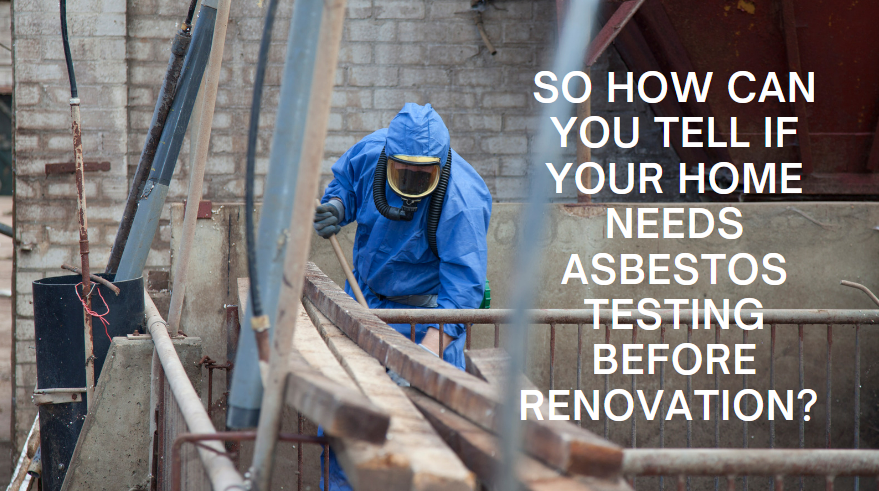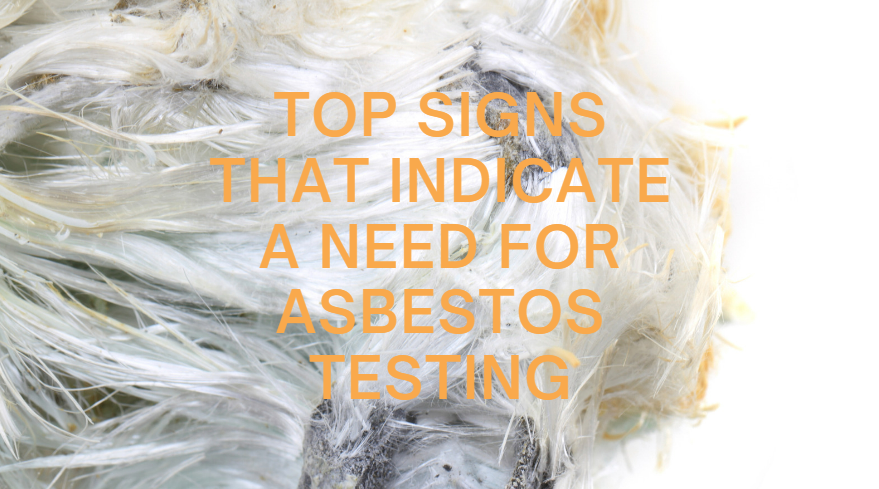
Introduction – Why Asbestos Awareness and Testing Matter
Asbestos exposure has long been associated with serious health risks, including lung disease and mesothelioma. For property owners, understanding when and why to test for asbestos is critical for ensuring the safety of residents and workers, especially during renovations or repairs.
So how can you tell if your home needs asbestos testing before renovation?

This question is important for anyone who owns or manages older properties and may not be sure about the presence of asbestos. This article outlines key signs that indicate the need for asbestos testing, explains the common places asbestos may be found, and guides readers on how to proceed with professional inspections.
Concerned about potential asbestos in your property? Schedule your professional asbestos testing today to ensure safety and peace of mind.
What is Asbestos and Where is it Commonly Found?
Asbestos is a group of naturally occurring minerals that were widely used in building materials due to their fire-resistant and insulating properties. Its use peaked in the mid-20th century but was eventually banned or restricted in many countries as its health risks became more evident. Despite this, many properties built before the 1990s still contain asbestos.
Common Materials That May Contain Asbestos:
- Insulation for pipes, boilers, and ductwork
- Cement sheeting and roof tiles
- Vinyl floor tiles and adhesives
- Textured paints and coatings
- Ceiling tiles and drywall
Knowing where asbestos is most likely to be found can help homeowners recognize potential risks and decide when to test for asbestos.
Top Signs That Indicate a Need for Asbestos Testing

1. Ageing or Damaged Building Materials
Signs of asbestos are more likely to be found in properties where construction materials have aged or deteriorated. Cracks, chips, and crumbling in insulation, drywall, or roofing can signal the presence of asbestos. Asbestos fibres are most dangerous when airborne, and damaged materials increase this risk.
What to Watch For:
- Peeling or crumbling insulation around pipes or boilers
- Deteriorated ceiling tiles or drywall
- Cracks in old cement sheets or siding
When these conditions are present, an asbestos inspection process should be considered to prevent exposure to loose fibres.
2. Renovation Plans for Older Properties
Planning a renovation? Asbestos testing for renovations is essential, especially for homes built before the 1990s. Renovation activities, like drilling, cutting, or sanding, can disturb materials containing asbestos and release fibres into the air. Testing before work begins helps ensure safety and compliance with regulations.
Why Pre-Renovation Testing Matters:
- Identifies asbestos presence before starting potentially hazardous work
- Prevents costly project delays by addressing safety issues early
- Helps homeowners make informed decisions about repair methods and containment
3. Previous Asbestos Removal or Repairs
If your property has undergone past asbestos removal, it’s still wise to check for any residual fibres or previously untreated materials. Not all removal efforts are completely successful, and materials like insulation or ceiling tiles might still harbour asbestos. Conducting an asbestos inspection process following earlier work can reveal any remaining risks.
Signs That Suggest Residual Asbestos:
- Recent repairs on walls or ceilings that were part of an older structure
- Any area previously noted to have asbestos that wasn’t removed or encapsulated
- Unexplained dust in areas known for older building materials
4. Historical Use of Certain Materials in Construction
Properties built during the period when asbestos use was at its peak (roughly 1940s-1980s) are particularly at risk. Common construction elements, such as cement sheets, ceiling tiles, and vinyl flooring, were often made with asbestos fibres for added durability.
Examples of Potential Asbestos-Containing Materials:
- Cement board siding often used in garages or sheds
- Older vinyl floor tiles, especially those measuring 9×9 inches
- Textured wall and ceiling coatings, such as “popcorn” ceilings
Recognizing these materials and understanding their potential risks are key when considering when to test for asbestos.
Don’t wait for problems to arise. Contact us now to book an asbestos inspection and protect your home and family.
When to Consult a Professional for Testing
Certified asbestos testing is important for accurate results and safe handling. DIY testing is not recommended due to the risk of releasing asbestos fibres during the sampling process. Instead, reaching out to professionals ensures that samples are taken correctly, minimising exposure.
Why Professional Testing Is Important:
- Certified inspectors have the training and tools to safely collect and analyse samples.
- Licensed testing services follow strict safety protocols and are equipped to handle unexpected challenges.
- Accurate identification of asbestos helps guide the appropriate removal or containment strategy.
How to Arrange for a Professional Asbestos Test
If signs of asbestos are present or if a renovation is planned, arranging for a professional test is the next step. Here’s how property owners can proceed:
- Research Certified Inspectors: Look for testing services with the appropriate certifications and a proven track record. Online reviews and recommendations from other property owners can be helpful.
- Request a Quote and Understand Costs: The cost of asbestos testing for renovations or general inspections can vary based on property size and the number of samples needed. Obtain quotes from multiple providers to understand the price range.
- Schedule the Inspection: Set a time for inspectors to come when the property can be safely vacated, if necessary. The process typically involves sample collection, which is then sent to a lab for analysis.
- Await Results and Next Steps: Lab analysis may take a few days to a week. Once results are in, the testing company can advise on safe removal or containment methods if asbestos is present.
Steps for Hiring a Qualified Service Provider
- Verify Licences and Certifications: Ensure the testing company has proper certifications from local regulatory bodies. This confirms that they comply with safety and procedural standards.
- Review Service Capabilities: Some providers may offer additional services like removal and containment. Understanding what each company offers can streamline the process if removal is needed after testing.
- Understand Safety Measures: Professional inspectors should explain how samples will be taken and what precautions are in place to prevent contamination. This transparency is essential for peace of mind during the process.
- Compare Costs: While price shouldn’t be the sole factor, comparing quotes helps in choosing a service provider that fits your budget without compromising on safety and quality.
Protecting Your Property and Its Occupants
Understanding the signs of asbestos and knowing when to consult with Integrated Environmental for testing can protect both property value and the health of its occupants. From deteriorating insulation to pre-renovation precautions, being aware of these warning signs is the first step toward safety.
For reliable asbestos inspection processes, contact our certified experts who prioritise thorough, safe, and compliant testing.
Ready to take the next step for a safer property? Reach out to us for certified asbestos testing services and expert guidance.
What Are the Most Common Signs of Asbestos in Older Properties?
The most common signs of asbestos include crumbling insulation, ageing drywall, and damaged ceiling tiles. Properties with these issues are at higher risk, especially if built during the mid-20th century. Identifying these signs early can help you determine when to test for asbestos.
How Can I Tell if My Home Needs Asbestos Testing Before Renovation?
If you’re planning to renovate an older home, pre-renovation asbestos testing for renovations is crucial. Common signs, such as cracked cement sheets or peeling wall coatings, can signal asbestos presence. Before any renovation begins, ensure testing is completed to prevent exposure.
Is It Safe to Stay in My Property While Testing for Asbestos?
During the asbestos inspection process, it’s typically safe to stay in the property, as professional testing involves minimal disturbance. However, certain conditions may require temporary relocation if sampling or more invasive work is needed.
